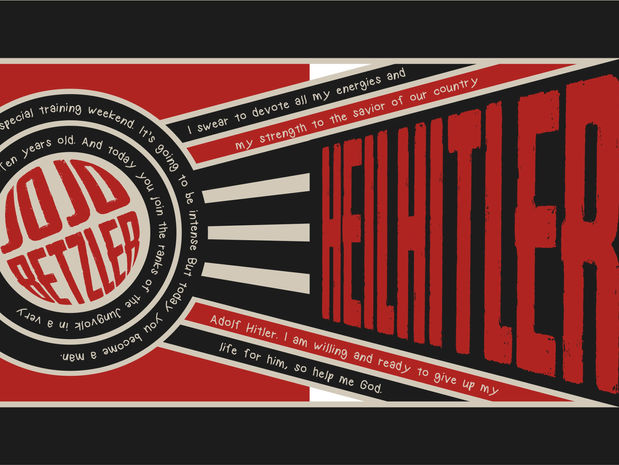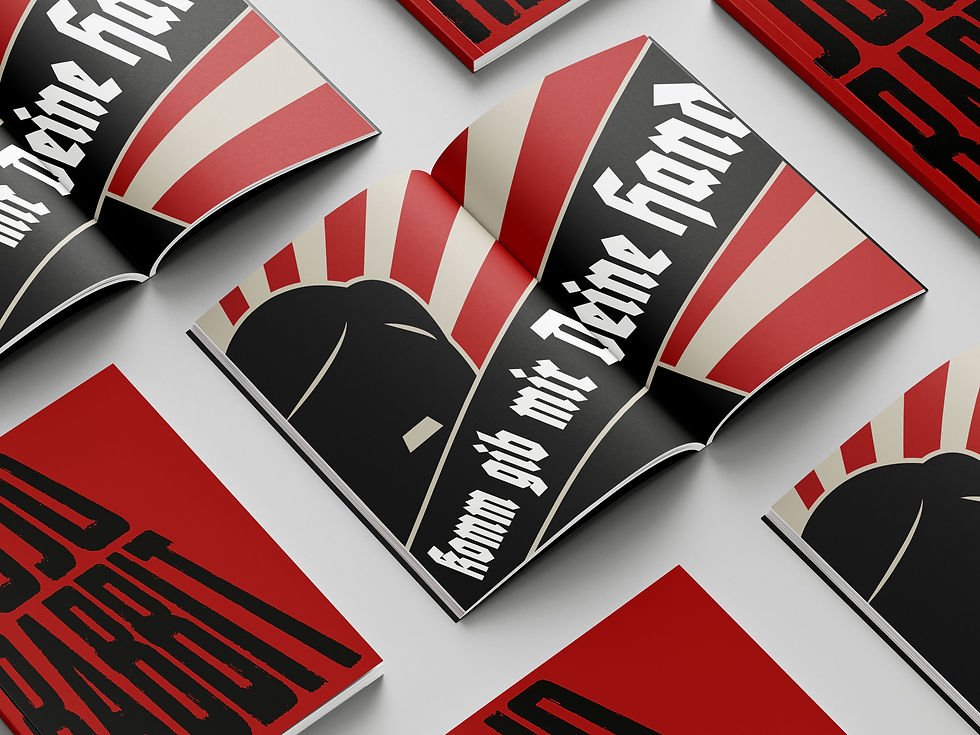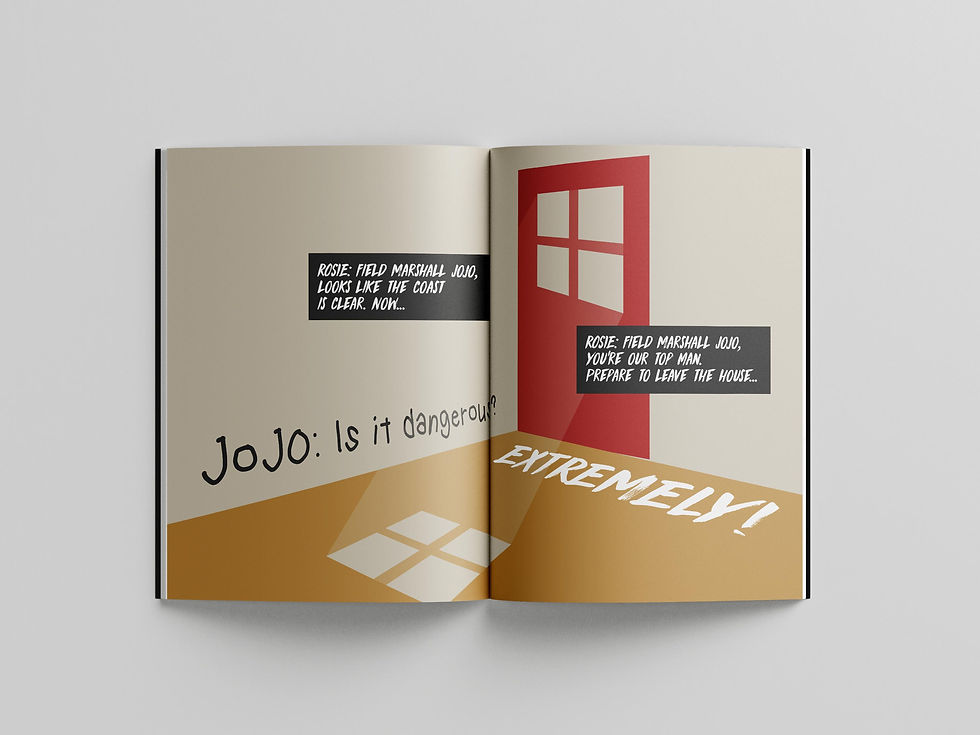MOVIE BOOK: EXPERIMENTAL TYPE
PROJECT BRIEF:
Pick a film or a play and transform it into a typographic book.
-
What is your overarching concept for the book?
Plot Summary: JOJO RABBIT
A World War II satire that follows a lonely German boy named Jojo whose worldview is turned upside down when he discovers his single mother is hiding a young Jewish girl in their attic. Aided only by his idiotic imaginary friend, Adolf Hitler, Jojo must confront his blind nationalism.
-
How can you express the themes of the film/play typographically?
Typographic expression is key to the book translated through a typographical construction of perspective, and movement of type inspired by an amalgamation of compositions created based on the physical spaces/ environment depicted in the movie. Type size and busy type are an intentional choice for the book to reflect the turmoil-fueled climate of the times the movie is set in.
-
How will you give a voice to the characters?
Each character in the movie has been carefully differentiated through the color choice of the spread/type, the typeface, and the alignment of the type. All choices are based on the tone, temperament, and personality of the character in the scene.

COLOR STORY
The traditional colors of ‘history’ are black and white. However, Jojo Rabbit, anti-hate satire of Nazi Germany is brimming with the fashion, color, and vitality of German life during the Second World War. Jojo Rabbit is a captivating, vibrant and bold reminder of the culture and color that was the backdrop of one of the darkest periods in our global history.


PRIMARY CHARACTER TYPE CHOICE
1. Jojo Betzler - Before the death of Rosie - Childlike/sketchy handwritten typeface - Handleson Four
Post-death of Rosie - A mature modern san serif typeface - Futura Medium
2. Rosie Betzler - A serif typeface - Academy
3. Adolf Hitler - Headliner no. 45 and Tannenberg Fett
4. Elsa Korr - Futura Medium
SECONDARY CHARACTER TYPE CHOICE
1. Captain Klenzendorf - Futura Heavy
2. Yorki- Handleson Four
TERTIARY CHARACTER TYPE CHOICE
1. Captain Deertz’ - Headliner no. 45 and Tannenberg Fett
2. Finkel - Futura condensed Medium
3. Fräulein Rahm - Futura condensed Medium
MOODBOARD: TYPE AND VISUALS
The Schutzstaffel
A major paramilitary organization under Adolf Hitler and the Nazi Party in Nazi Germany, and later throughout German-occupied Europe during World War II. It began with a small guard unit known as the Saal-Schutz made up of NSDAP volunteers to provide security for party meetings in Munich.


Windows
The Windows/doors play an imperative role in the film. The windows have been portrayed as a motif of fear, which alarm everyone. It is a part of the Gustape spy system and are the eyes that
spy on you.

The Swastika
The swastika became the
most recognizable symbol of Nazi propaganda, appearing on the flag referred to by Hitler in Mein Kampf, as well as on election posters, arm bands, medallions, and badges for military and other organizations. A potent symbol intended to elicit pride among Aryans, the swastika also struck terror into Jews and others deemed enemies of Nazi Germany.




































